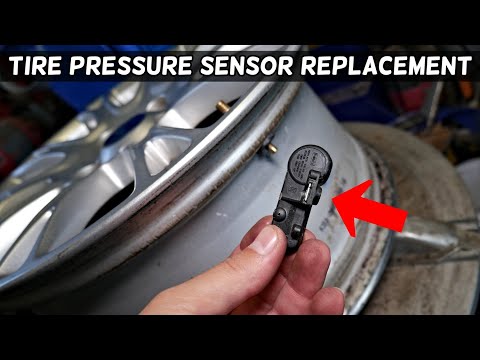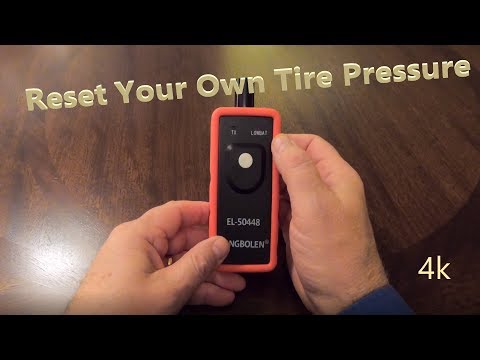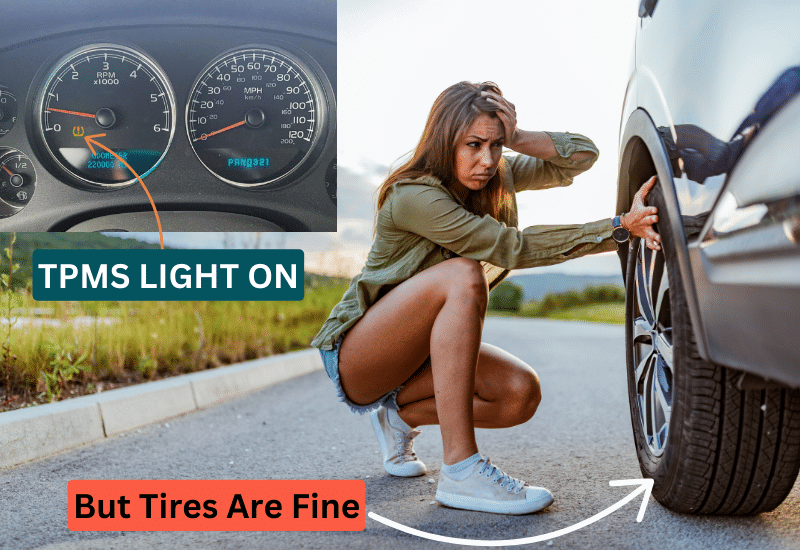
If you notice that the tire pressure warning light is on, even though the tires seem fine, it could not only be costing you money but might be a serious safety issue you must take care of immediately.
The tire pressure monitoring system can notice problems before they become visible. Improper tire pressure can steal money from your pocket due to reduced fuel economy and a shortened lifespan. The tire pressure light could also warn of impending doom, such as a dangerous blowout while driving. According to the National Highway Traffic Safety Administration, there were 664 fatalities in tire-related crashes in 2020 alone.
Read this article because I’ll explain the reasons why your tire pressure light is on, even when your tires seem fine, and offer practical solutions you can implement at home, sparing you from costly mechanic visits.
What Does the TPMS Light Tell You?
Many vehicles now use delicate sensors as part of a tire pressure monitoring system (TPMS) to communicate problems related to your vehicle’s tires. The dashboard warning light is usually amber or yellow and often resembles a tire cross-section with an exclamation point in the middle.
When the TPMS light is on, it tells you about the following:
The most common type of TPMS uses a small sensor to measure the pressure within each wheel constantly. It is typically part of the valve stem. Other tire pressure monitoring systems use speed sensors or anti-lock brake systems to check for a tire that isn’t rotating appropriately, which indicates the pressure is too low.
5 Reasons for Tire Pressure Light Is On When Tires Are Fine?
Seeing the tire pressure light turn on when the tires seem fine can be annoying. But there are many reasons why the light comes on, with some posing a dangerous threat and others costing you money.
1. Ambient Temperature Change
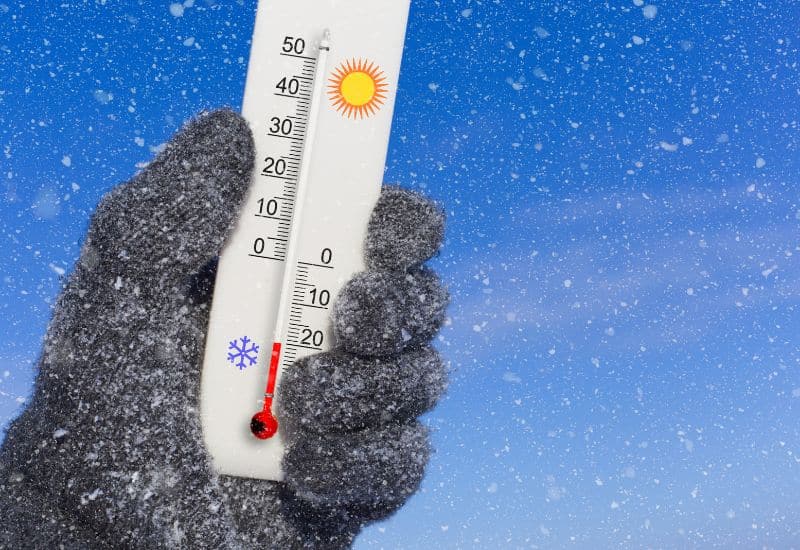
One of the most common reasons why the tire pressure light comes on when the tires are fine is due to temperature changes. This can happen over the year as seasons change, but even one extreme overnight low can cause the low-pressure light to turn on. In many cases, the temperature changes can cause the tire pressure to drop too low, even if you can’t see it.
When the ambient air temperature cools down, the air becomes dense, which results in lower pressure in sealed spaces like tires. As seasons change from summer to winter, this can cause low tire pressure that drops enough to make your warning light illuminate. It can also make appropriate winter tire pressure too high during the summer.
You might notice that when you start driving, the light turns off. That’s because the friction of the tires hitting the road will generate heat, increasing the tire pressure. But proper tire pressure is based on cold PSI, which happens when your car has been sitting, not while it’s warmed up and driving. So, you should pay attention to low-pressure alerts even if they turn off after driving.
2. Slow Tire Leak
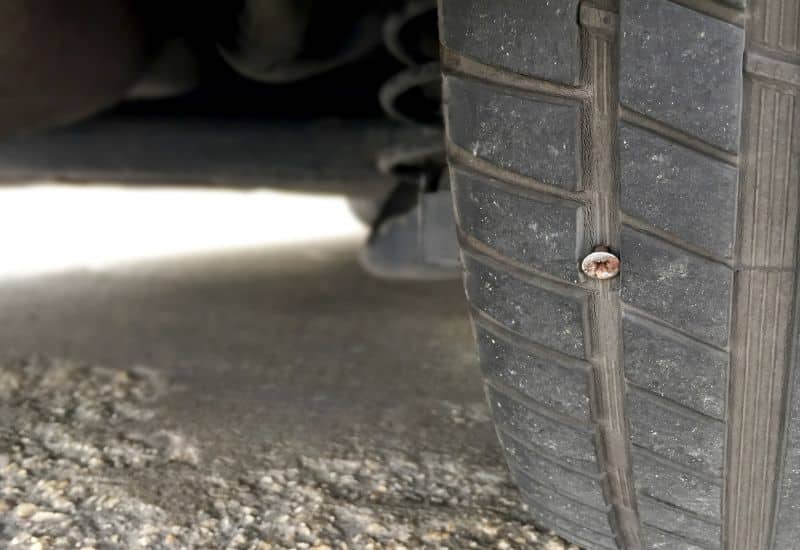
It’s also possible that one of your tires is unnoticeably low, caused by a slow leak. One of the most common culprits is when something gets lodged in your tire, like a nail or screw.
These objects can nearly hold most of the air back, but when you make a sharp turn, hit a bump, and drive on it, air can leak out around the object. And it will likely fail completely at some point when the object breaks free.
The area where the tire meets the rim, known as the bead seal, is another common area for nearly undetectable slow leaks. Corrosion, dirt, or other items might cause the seal to be imperfect, and air slowly escapes over time.
These can often be difficult to see, but the TPMS sensors can pick them up before you notice and before the nail flies out, giving you a flat tire.
3. Problems With Spare Tire
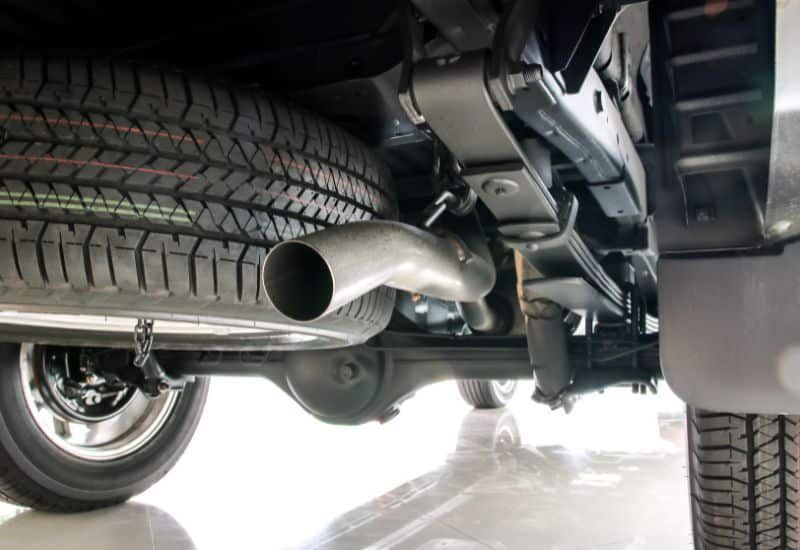
One very easy area to overlook is the spare tire. They will usually have a TPMS sensor, so a neglected spare tire can be the reason behind the warning light.
Quite often, it’s just that the air has lowered in the spare tire due to temperature changes or a very slow leak. It might not have any problems. But sometimes spare tires can get damaged by road debris, especially if they are mounted under the vehicle.
They can also get damaged in the trunk cavities if punctured, and some spare tires fail due to age, UV damage, or other seemingly random causes.
4. Faulty TPMS Sensor
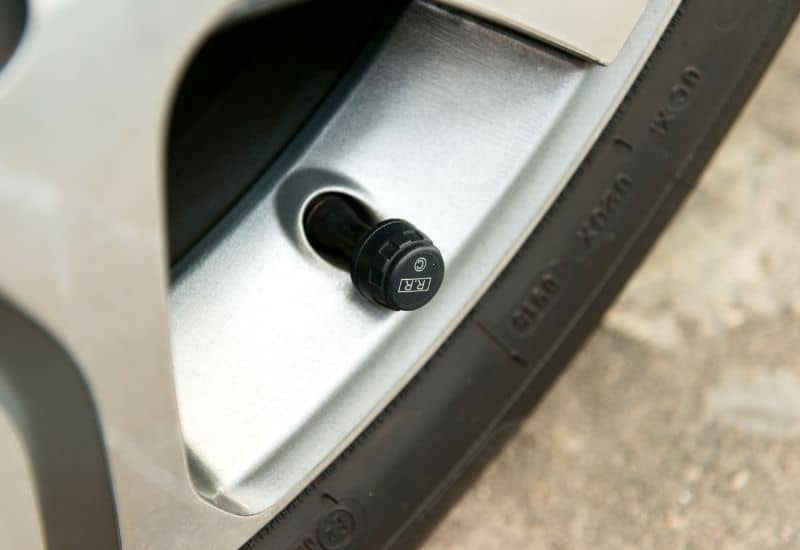
The sensors within each wheel have batteries inside that allow them to communicate with the central system. Since these batteries will lose charge over time and eventually die, the TPMS sensors have limited lifespans, typically ten years at most, but often closer to five or seven years.
Also, the tire pressure sensors are delicate items. They can break if you hit a hard bump in the road. When you have your tires mounted or balanced, that’s another time that they might get damaged and malfunction. Any time you have your tires or wheels serviced, it might lead to a bad TPMS sensor.
Using a flat-repair substance is a quick way to get back on the road after a flat. But the goo-like material can clog the sensor and could be the reason your tire pressure monitoring system light turns on.
5. Other Electrical Issues
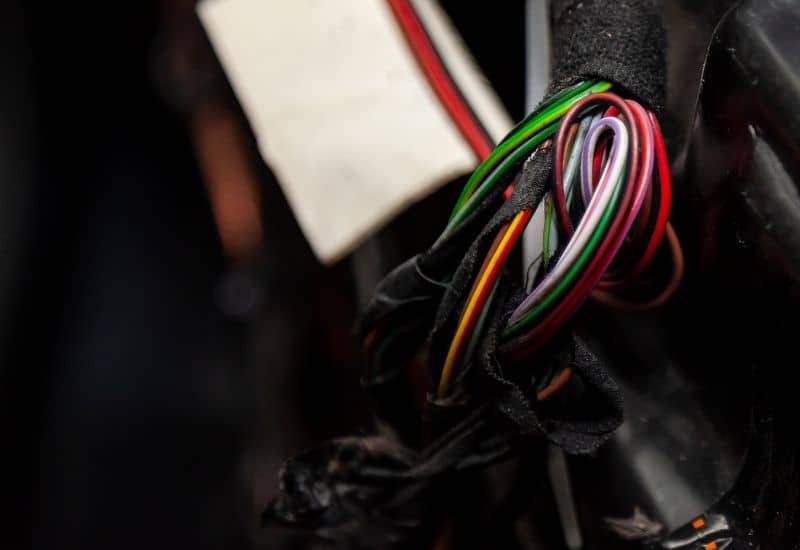
In rare cases, other electrical problems can cause the TPMS warning light to come on. It could be that the wires for the central module are cut or damaged. And if your car uses the speed or anti-lock brake sensors as part of the TPMS system, failures to these delicate parts can also cause the low-pressure light to come on.
The issue may be with the main TPMS module or the engine control unit/module (ECU or ECM). While these typically last many years without problems, sometimes they can fail and cause the TPMS light to come on.
What To Do When Your Low Tire Pressure Light Won’t Turn Off
If your low tire pressure won’t turn off, it’s time to inspect your vehicle to determine why the light is on. Follow these steps to diagnose the problem and get safely back on the road.
1. Check Your Tire Pressure
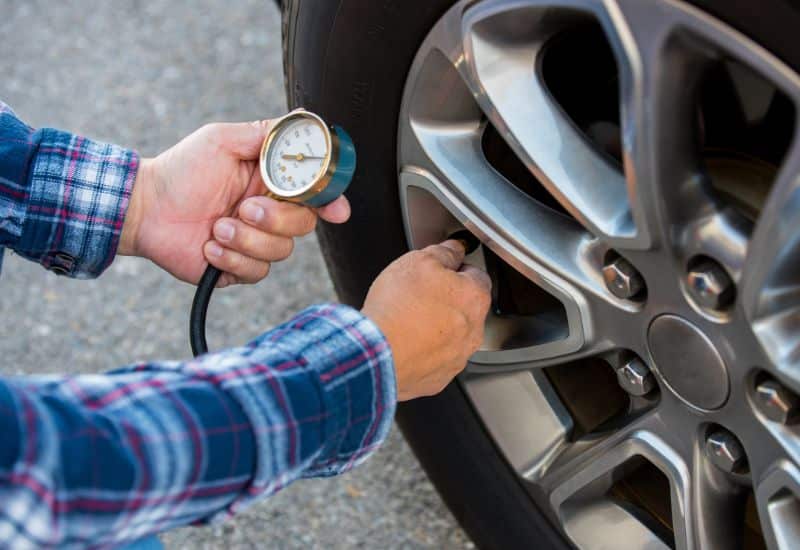
Whenever your low tire pressure light comes on, the first step is to check your tire pressure manually. Low pressure could decrease your fuel economy and tire lifespan, even if they seem fine. Here’s how to check your tire pressure:
The recommended tire ratings are based on cold PSI. If you drove recently, you’ll need to wait about three hours for the tires to cool to get an accurate cold PSI reading.
If you find any tires are low, inflate them to the proper PSI. Sometimes, it isn’t a cause for concern due to ambient temperature changes. But it can also be a sign of other dangerous problems, so you should continue with this diagnostic process no matter what.
2. Carefully Inspect Your Tires
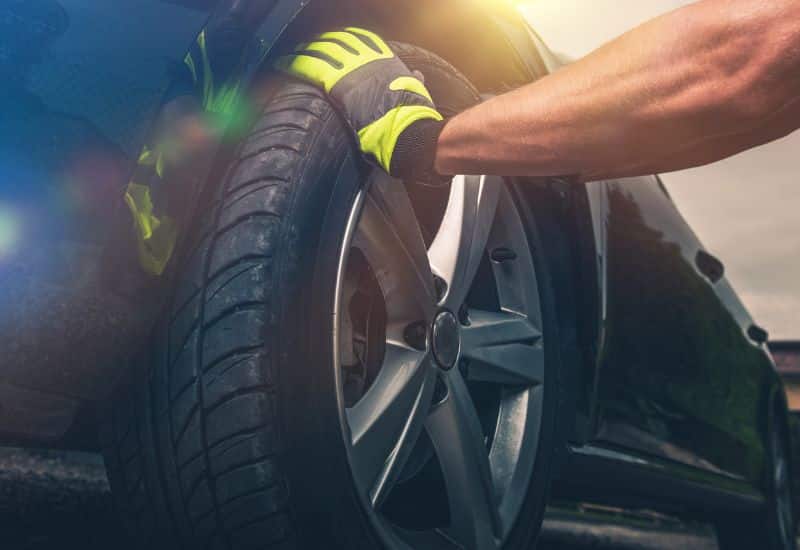
Next, perform a visual inspection of your tires, including the spare. Your goal is to locate any potential issue that might cause future headaches or pose a threat. Tires failing is a problem to take seriously and be proactive about, especially if the warning light turns on.
Start by examining every visible part of each tire, including the tread and the inside and outside sidewalls. You’re looking for objects that have pierced your tire, like a nail or screw, or any other problems, like a small cut or tear, or even an area that is deformed and bubbling out on the sidewall.
These can be hard to spot, so take your time, especially if you notice a tire has slightly low pressure. Even if they aren’t leaking air, these problems are worth fixing immediately. If the objects come loose or the problem area fails while you’re driving, you can experience a rapid blowout, which may cause you to lose control of your vehicle and crash.
3. Test Valve Stem and Bead Seal
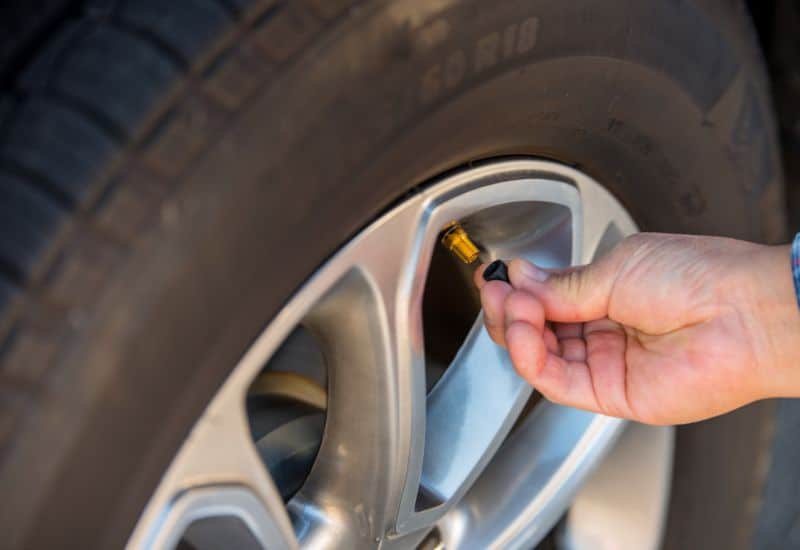
Next, focus on the valve stem and beal seal where the tire meets the rim. These problematic areas can cause slow leaks and sometimes fail rapidly while driving.
Check for slow leaks by mixing about a teaspoon of dish soap into about a half-cup of water. Wipe or spray this mixture on the bead area and valve stem. If bubbles start to form, that shows a leak needs repair.
4. Reset Tire Pressure Sensors
You might only need to reset the tire pressure sensors if you don’t find any issues. I’ll cover this in detail below.
Scan for Codes
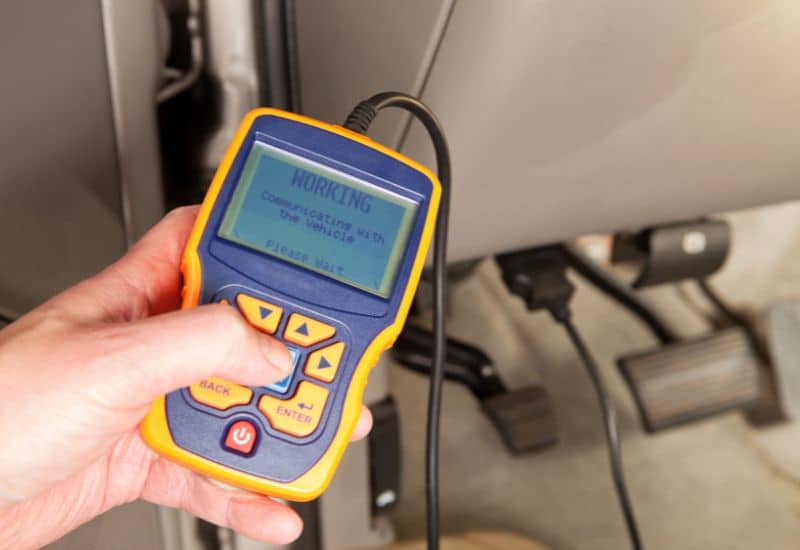
You can use an onboard diagnostic scanner, known as an OBD-II scanner, to get more information about why your low tire pressure warning light is on. One capable of reading TPMS codes can be more expensive, but they’re useful for many home repairs and diagnostics. Auto parts stores often let you borrow OBD readers for free.
Here are some of the likely results of using an OBD reader:
Replace the Tire Pressure Sensor
Since tire pressure sensors don’t last forever, replacing the sensor is a common need. This process can be somewhat challenging as you need to access the inside of the wheel, but some people can do this at home.
Here is how to replace the tire pressure sensor:
You also might need to reset the TPMS system covered in the next section.
How To Reset the Tire Pressure Sensor? Step by Step
After having tires serviced, replacing a tire pressure sensor, or repairing other parts of the tire pressure monitoring system, you might have to reset the system or sensors by following this guide:
- Turn the ignition to “on,” but don’t start the vehicle, then hold down the reset button until the tire pressure warning light flashes (usually three times).
- If that doesn’t work, try starting the car first and then pushing the reset button until the warning light flashes.
- If the light comes back on, you might need to go for a high-speed drive (around 50 mph) for at least 10 minutes after pushing the reset button. Other vehicles only require you to leave the car running for 20 minutes.
How To Prevent the Issue From Happening Again
To prevent the TPMS light from coming on again, regularly check your tire pressure levels and adjust the pressure as needed. This is especially important when major temperature swings happen.
You should also regularly inspect your tires and wheels for damage and promptly resolve any issues.
Frequently Asked Questions
Will it reset itself if the tire pressure light comes on?
Many tire systems reset themselves if the tire pressure light comes on and you fix the problem. Some cars reset after driving at 50 mph for 10 minutes. Others use a reset button in the glove compartment or under the steering wheel.
Is it safe to drive the car when the TPMS warning light is on?
No, driving the car is unsafe when the TPMS warning light is on. According to the NHTSA, over 600 people died from tire-related failures in 2020. The warning light could be a precursor to a rapid tire blowout, which can cause you to lose control and crash.
How to fix the TPMS sensor?
To fix the TPMS sensor, start by resetting the system by pushing the reset button, going for a 10-minute drive over 50 mph, or deflating and then properly reinflating the tires. If that fails, you might need to replace the sensor because it’s broken or has a dead battery.
What can I do to reduce TPMS warnings?
To reduce the TPMS warnings, regularly check your tire pressure and adjust as needed to keep it at the recommended level. Also, check the tires and wheels for damage and have any issues repaired. Resetting the TPMS sensors can also help get rid of the warnings.
Why Is the Tire Pressure Light on When Tires Are Fine? Wrap Up
The tire pressure light may come on when the tires seem fine if there is an extreme temperature change, a slow tire leak, problems with the spare tire, issues with a sensor, faulty TPMS module or ECU, or other electrical issues. To fix it, check your tire pressure, inspect your tires for nails or damage, test the valve stem and bead seal, scan the system for problem codes, and repair any problems.
If needed, replace the tire pressure sensor by taking off the wheel and breaking the bead to access the sensor. You can also reset the sensors by following the procedure in your owner’s manual, going for a 10-minute drive at 50 mph, or pushing the TPMS reset button. Regularly check your tire pressure to ensure the tire pressure warning light doesn’t come on.

Written By
Jason Farrell
Jason Farrell is a certified master technician, the editor of Mechanic’s Diary in Pittsburgh, Pennsylvania. He is ASE (Automotive Service Excellence) certified and earned a Bachelor’s Degree in Automotive Technology from Pittsburg State University. With nearly 18 prior years of experience in the automotive field, he has extensive knowledge about Domestic, European, and other foreign makes and models of cars and light trucks. Jason’s experience working as a technician and service manager at dealerships, gave him the experience and know-how of most aspects of inspection, diagnosis, and repair from engine and drivability to electrical, HVAC, brakes, steering and suspension and everything in between.

